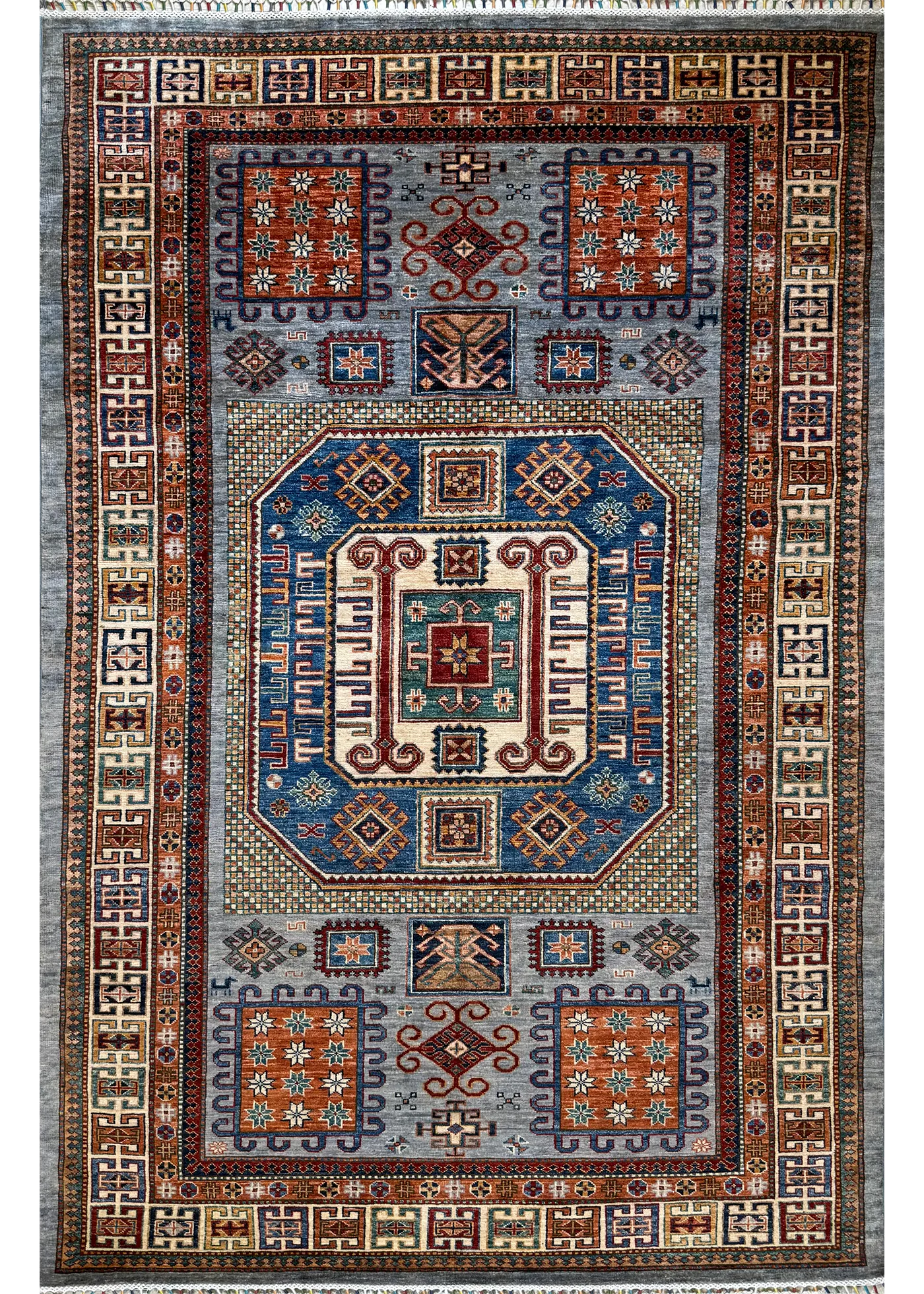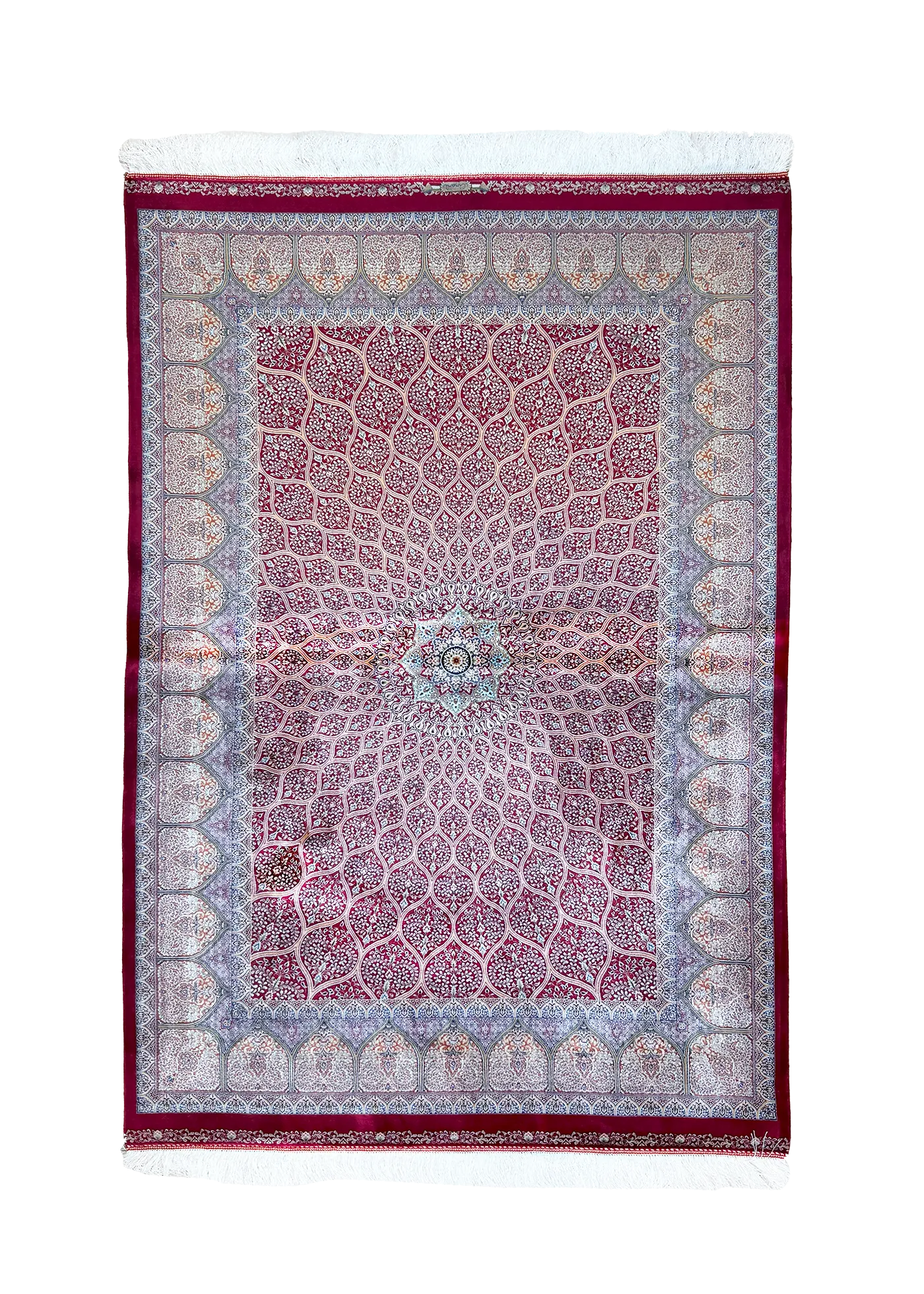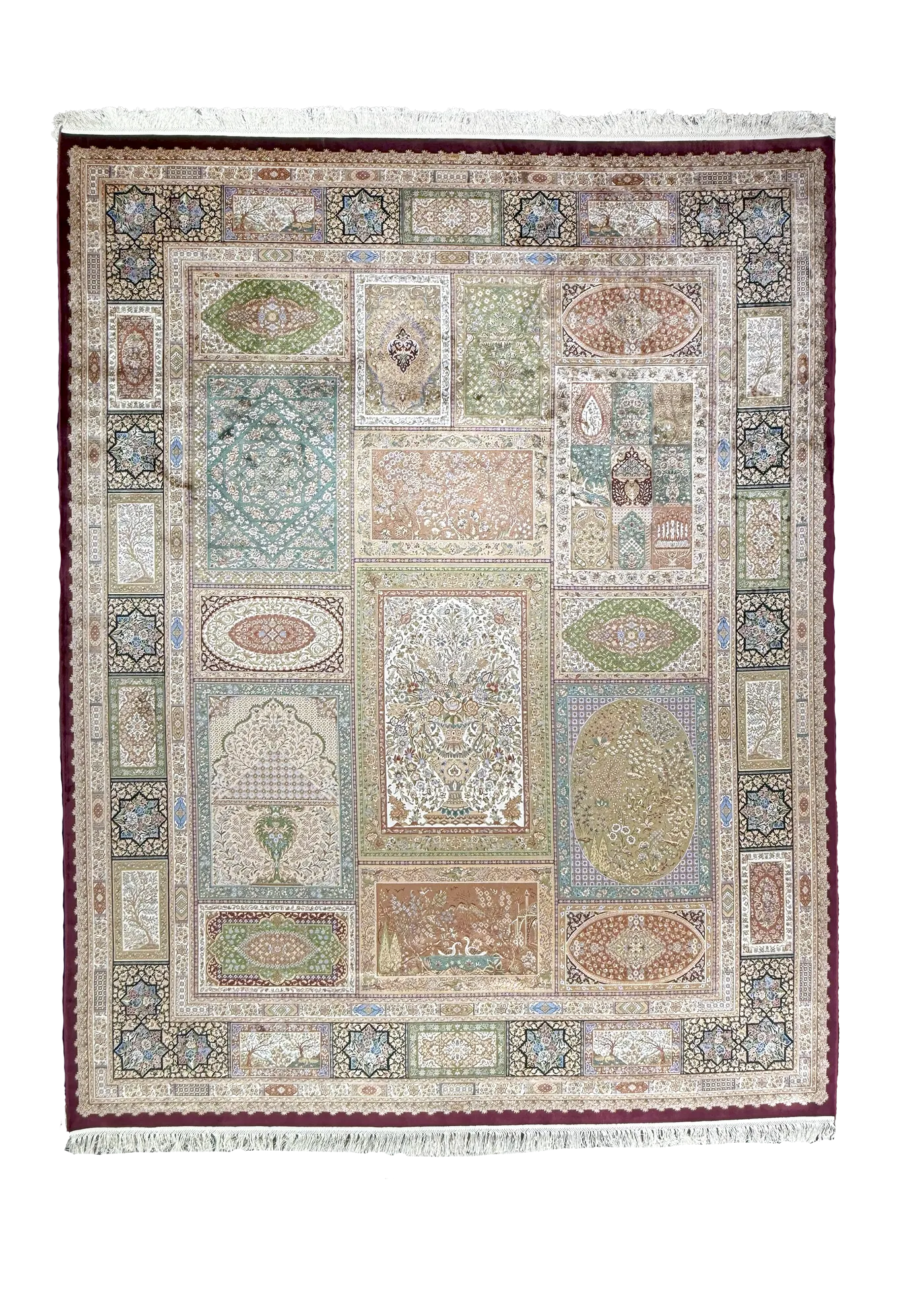Kashan Persian Rugs
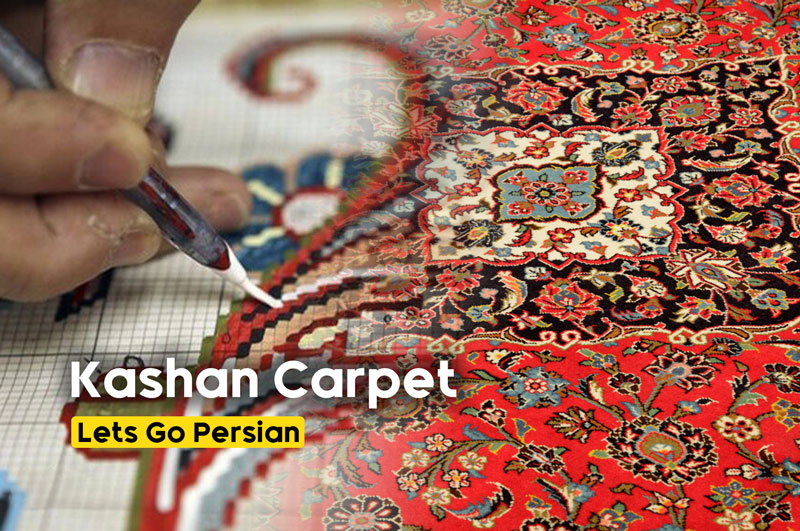
- 1 Green and Brown Wool Persian Rug Kashan Pattern 7 x 9
- 2 Introduction: Kashan Persian Rugs
- 3 The Origins of Kashan Persian Rugs in History
- 4 Iconic Patterns and Designs in Kashan Rugs
- 5 The Luxurious Appeal of Silk in Kashan Rug Artistry
- 6 Kashan Rugs in Cultural Ceremonies and Traditions
- 7 The Weaving Techniques Behind Kashan Persian Rugs
- 8 The Global Influence of Kashan Persian Rugs
- 9 Caring for Your Kashan-Inspired Rug
- 10 FAQ Section
- 11 Infographic: A Visual Guide to Kashan Persian Rug Designs
- 12 Conclusion
Introduction: Kashan Persian Rugs
Step into a room where a Kashan Persian rug captures your gaze. Its patterns tell tales of ancient artistry. These rugs hail from Kashan, a city steeped in history. They’re more than decor—they connect us to the past.
We’ll explore the origins of Kashan Persian rugs in this article. You’ll learn about their iconic designs and the luxury of a silk Persian rug. These pieces remain timeless for a reason.
Are you a collector or an art lover? You’ll find inspiration here. Join us on this journey. Visit Afra Rugs’ Traditional Persian Rugs Collection to see these designs today.
The Origins of Kashan Persian Rugs in History
Kashan claims the title of Central Iran’s oldest carpet-producing city. Its weaving tradition stretches back centuries. The late 19th century saw a revival of Kashan Persian rugs. Artisans gained fame for crafting silk Persian rugs that glowed with elegance.
Kashan’s weaving history ties deeply to cultural stories. Some tales link the city to the three wise men. They followed a star to Bethlehem, as Friar Odoric of Pordenone noted in 1330. This adds a mystical charm to Kashan’s legacy.
Here’s a look at key milestones in Kashan’s rug-making history:
- 16th Century: Kashan rises as a weaving hub under the Safavid dynasty.
- Late 19th Century: Silk rug weaving revives with renewed focus.
- Early 20th Century: Designs balance out, becoming more refined.
- Today: Kashan symbolizes global textile artistry.
This timeline highlights the endurance of Kashan Persian rugs. The Metropolitan Museum of Art notes that Safavid-era rugs often feature floral motifs and medallions. Their influence persists in modern designs.
Iconic Patterns and Designs in Kashan Rugs
Kashan rugs draw eyes with their signature large medallion designs. Known as “medal bozorg,” this pattern features a field of flowers. Farsi sources describe it as “a field of flowers with ornamental motifs.” It reflects Kashan’s love for nature and beauty.
The colors in Kashan Persian rugs stun with their vibrancy. Artisans often blend deep blue, bold red, and ivory. They add splashes of yellow, green, and burnt orange for contrast. This mix creates a harmonious yet striking effect.
Here’s a breakdown of common Kashan patterns:
| Pattern | Description | Common Colors |
| Large Medallion | Central ogival medallion with floral details | Blue, red, ivory |
| Shah Abbasi | Stylized floral motifs in repeating patterns | Green, yellow, burnt orange |
| Hunting Scenes | Depictions of animals and hunters | Red, blue, ivory |
| Herati | Diamond-shaped floral design | Blue, ivory, yellow |
Caption: Iconic Patterns in Kashan Persian Rugs
These designs reveal the talent of Kashan weavers. Afra Rugs’ Blue Silk Persian Rug Heaven Pattern mirrors this style. Its floral motifs echo traditional Kashan artistry.
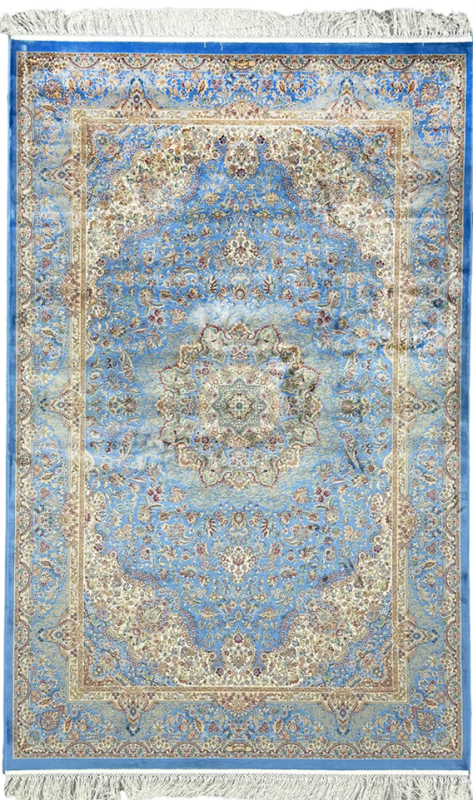
: A Kashan Persian rug with a blue and ivory large medallion design. Courtesy of Afra Rugs, Blue Silk Persian Rug Heaven Pattern
The Luxurious Appeal of Silk in Kashan Rug Artistry
Silk defines the luxury of Kashan Persian rugs with its radiant sheen. The Metropolitan Museum of Art highlights a 16th-century Kashan Persian rug. Its silk threads give a glowing effect. This glow makes the rug a standout piece.

A historical Kashan Persian rug with intricate floral medallions in red, blue, and ivory, displayed at the Metropolitan Museum of Art. Image courtesy of The Metropolitan Museum of Art.
In Kashan, silk highlights patterns like the Shah Abbasi motif. Its fine texture allows for detailed designs. Collectors and decorators prize silk Persian rugs from Kashan for this precision. Wool can’t match this level of intricacy.
Afra Rugs captures this tradition in modern pieces. Take the Blue and Beige Silk Persian Rug Faraz Pattern. Its sheen and detailed motifs reflect Kashan’s heritage. Bamboo silk ensures both luxury and durability.
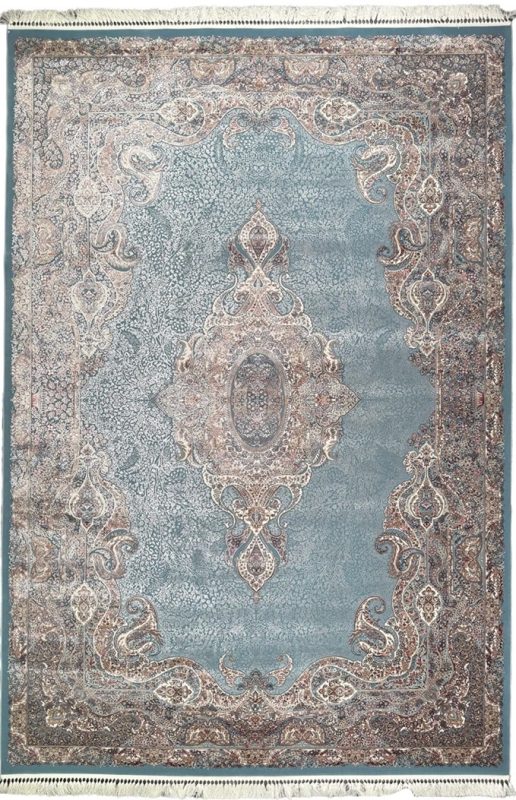
A silk Persian rug in blue and beige with intricate Kashan-inspired patterns. Courtesy of Afra Rugs, Blue and Beige Silk Persian Rug Faraz Pattern.
Silk also feels luxurious to the touch. Run your hand over a silk Persian rug. It blends softness with strength, embodying history in every fiber. This makes Kashan rugs perfect for elegant spaces.
Kashan Rugs in Cultural Ceremonies and Traditions
Kashan rugs hold a special place in cultural traditions. Families display their finest Kashan Persian rugs during events. These rugs honor guests and mark important moments. They’re more than decor—they’re symbols of prestige.
History shows Kashan rugs as gifts of respect. Their silk threads and vibrant colors made them ideal for such special gestures. Deep blues and reds added to their special value. This practice highlights their cultural role.
Today, Kashan Persian rugs still carry meaning. A silk Persian rug might celebrate a wedding or a new chapter. Its patterns weave stories into every thread. This keeps Kashan’s legacy alive in homes everywhere.
The Weaving Techniques Behind Kashan Persian Rugs
The magic of Kashan Persian rugs lies in their weaving techniques. Artisans use a method called the Persian knot. This knot, also known as the asymmetrical knot, creates a tighter weave. It allows for finer, more detailed patterns.
Weavers in Kashan work on upright looms. They tie each knot by hand with precision. This process can take months, even years, for a single rug. The result is a dense, durable piece that lasts generations.
Silk plays a key role in this craft. A silk Persian rug requires extra care during weaving. The fine threads demand skilled hands to avoid breakage. This ensures the luminous quality Kashan rugs are known for.
Natural dyes bring Kashan rugs to life. Artisans extract colors from plants like indigo for blue. Madder root provides rich reds. These dyes create the vibrant palette typical of Kashan Persian rugs.
The weaving process also involves a special step: washing. After completion, weavers wash the rug to soften its texture. This enhances the silk’s sheen, making the colors pop. It’s a labor of love that defines Kashan’s craft.
Modern adaptations, like those at Afra Rugs, honor these techniques. While traditional rug-making is labor-intensive, Afra Rugs uses bamboo silk for a similar effect.
The Global Influence of Kashan Persian Rugs
Kashan Persian rugs have left a mark far beyond their birthplace. Their intricate designs caught the eye of European nobility centuries ago. By the 16th century, these rugs adorned palaces across the continent. They became symbols of wealth and taste.
Interior designers today still draw inspiration from Kashan rugs. The large medallion pattern often appears in modern decor. It adds a touch of history to minimalist spaces. This shows the timeless appeal of Kashan Persian rugs.
Museums worldwide showcase these pieces as cultural treasures. The Metropolitan Museum of Art, for instance, holds several Kashan rugs in its collection. They highlight the artistry of Persian weaving. This global recognition cements Kashan’s place in history.
The influence extends to fashion and art as well. Designers have borrowed Kashan’s floral motifs for textiles. You might spot a scarf or dress with patterns inspired by a silk Persian rug. This crossover keeps Kashan’s designs relevant in modern culture.

A 16th-century Kashan Persian rug featuring a bold red field with a central medallion in blue and ivory, showcased at the Metropolitan Museum of Art. Image courtesy of The Metropolitan Museum of Art.
Even in homes, Kashan rugs spark conversations. A silk Persian rug with its glowing blue and ivory tones becomes a focal point. It invites stories about its origins and craftsmanship. This cultural bridge connects people across the globe.
Afra Rugs brings this global appeal to your doorstep. Their Traditional Persian Rugs Collection includes pieces inspired by Kashan’s legacy. Whether in a cozy apartment or a grand hall, these rugs carry a universal charm.
Caring for Your Kashan-Inspired Rug
Proper care keeps a silk Persian rug beautiful. Vacuum gently on a low setting. This prevents damage to the fibers.
For spills, blot with a clean cloth right away. Don’t rub—it spreads the stain. Rotate your rug every six months for even wear.
If it’s in sunlight, use curtains to avoid fading. For deep cleaning, hire a professional. This preserves the bamboo silk’s delicate nature.
FAQ Section
What Makes Kashan Persian Rugs Unique?
Kashan Persian rugs feature large medallion designs and vibrant colors like blue, red, and ivory. Their use of silk—now often bamboo silk in modern pieces like Afra Rugs’—adds a luxurious sheen that stands out.
Does a Silk Persian Rug Work in High-Traffic Areas?
A silk Persian rug suits low-traffic areas best. It preserves the delicate fibers. For busier spots, place it under a coffee table where it can shine without heavy wear.
How Can I Spot a Kashan Persian Rug?
Look for a central medallion and floral motifs. A palette of blue, red, and ivory with yellow or green accents is typical. Silk often enhances these features in Kashan Persian rugs.
Are Kashan Persian Rugs Still Made Today?
Yes, Kashan remains a rug-making hub. Modern versions, like Afra Rugs’ bamboo silk pieces, adapt traditional designs. The legacy of Kashan Persian rugs inspires artisans worldwide.
Why Pick a Silk Persian Rug for My Home?
A silk Persian rug adds elegance and history to your space. Its luminous quality and intricate Kashan patterns make it a stunning centerpiece for any room.
Infographic: A Visual Guide to Kashan Persian Rug Designs

Conclusion
Kashan Persian Rugs blend history, artistry, and luxury in every thread. They originate in Central Iran, boasting iconic medallion designs. These rugs tell a story of cultural richness. The shimmer of a silk Persian rug adds elegance, making them timeless.
Their vibrant colors and intricate patterns inspire awe. Ready to bring this legacy home? Explore Afra Rugs’ Traditional Persian Rugs Collection. Find a piece that resonates with you.



